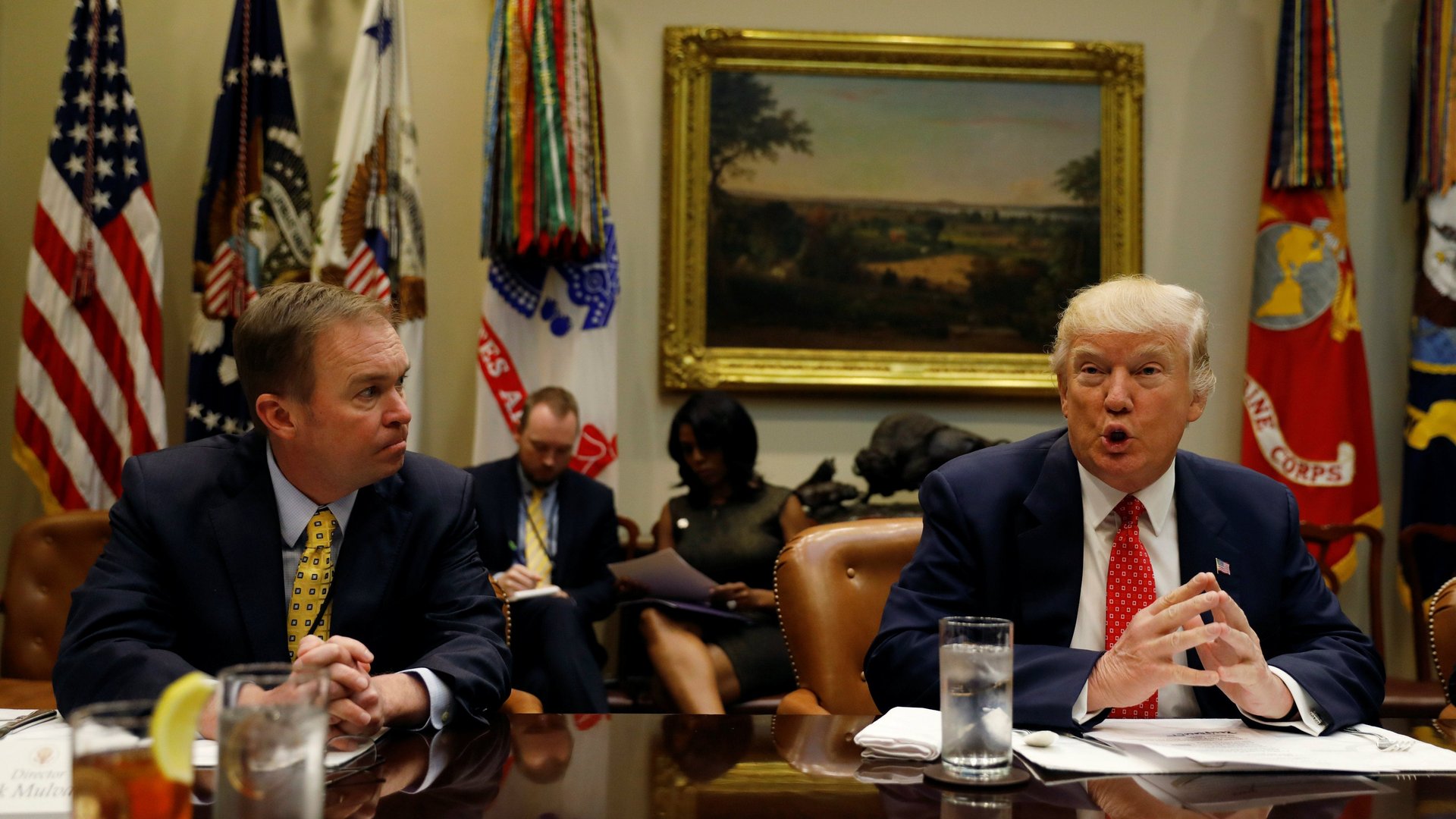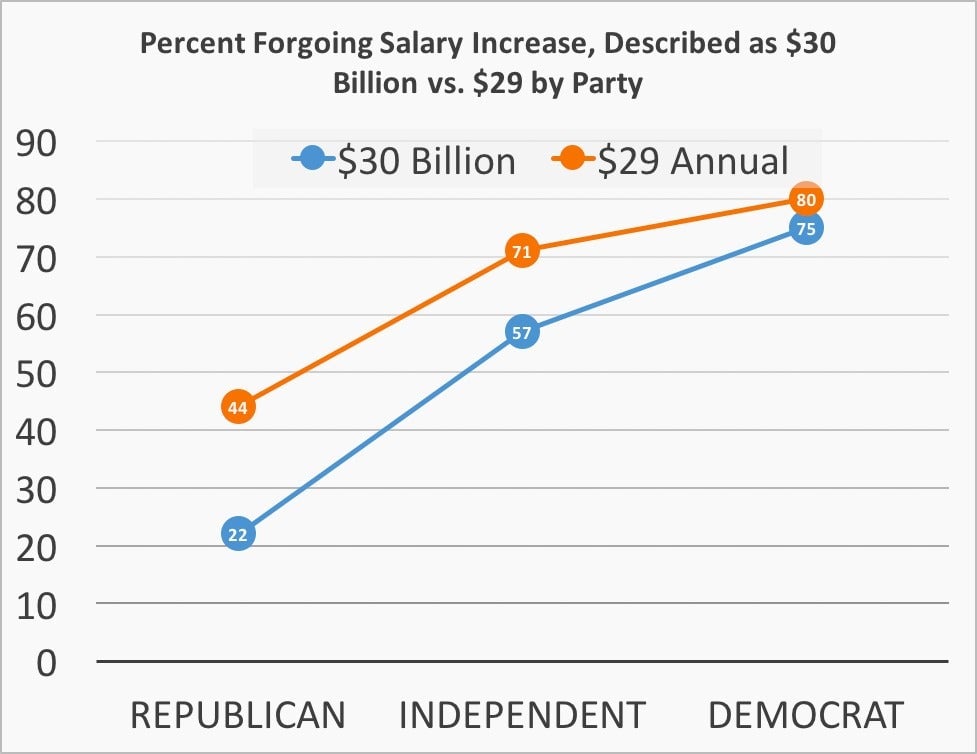Two business-school professors discovered how to make both red and blue Americans care about Trump’s drastic budget cuts
Almost all public policy involves tradeoffs: Cleaner air vs. more expensive electricity, greater border safety vs. more trade. Soon, the Trump administration will propose a budget, with cuts to save money and to change priorities. These will involve tradeoffs between benefits and costs that can be framed as changes to either individual citizens or to the country as a whole.


Almost all public policy involves tradeoffs: Cleaner air vs. more expensive electricity, greater border safety vs. more trade. Soon, the Trump administration will propose a budget, with cuts to save money and to change priorities. These will involve tradeoffs between benefits and costs that can be framed as changes to either individual citizens or to the country as a whole.
For example, the White House Budget office suggests eliminating the Corporation for Public Broadcasting, the Legal Services Corporation, AmeriCorps, and the National Endowments for the Arts and the Humanities, for a savings of $2.6 billion. This sounds like a lot of money, but if we calculate the per-person tax savings, it amounts to $7.72 a person. Would the way cost savings are described change what people want to happen?
We decided to test this using the Trump White House “America First Energy Plan,” which states that it would “eliminate harmful and unnecessary policies such as the Obama Climate Action Plan and the Waters of the US rule.” The projected benefit of these changes would “help American workers, increasing wages by more than $30 billion over the next seven years.”
Thirty billion dollars seems like a large benefit, but abandoning current policies will incur potential costs in the quality of air and water and future climate. A little math translates the $30 billion for the country into the personal benefit for each of the approximately 150 million American workers: An average wage increase of about $29 a year. This struck us as a lot less persuasive than the $30 billion total quoted on the web site. Are people’s tradeoffs influenced by this change in describing economic benefits? One of these numbers ($30 billion) seems large and abstract, the other ($29 per year) is more personal and concrete. Does the description make a difference?
We created a panel of 761 members using Amazon’s Mechanical Turk service, carefully eliminating people who had responded randomly, and asked them which of two options they preferred: to continue the Climate Action Plan and Waters of the US rule and forego the increase in wages, or, to roll-back the plans and receive the wage increase. Half of respondents saw the change described as “a benefit for all American workers of $30 billion dollars over seven years,” the other half saw “an annual benefit for each worker of $29 dollars for each of seven years.” To make sure they could do the math, if they wanted, we reminded everyone that there are approximately 150 million workers in the US.
The majority of respondents, 63%, wanted to keep the policies in place, even if it would cost them money. This is a non-representative sample, so we should be cautious, even if responses from this panel follow many decision-making patterns shown in national samples.
More important was the difference between aggregate and personal frames: About 12% more people want to keep the Climate Action Plan and Waters of the US Rule when the benefits of dropping them was described as the smaller, more personal and concrete $29 per year.
Is this true for everyone? As you might expect, people who describe themselves as Republicans are more likely to want to roll back the plans. But their support for regulation doubles when we used the personal frame, from 22% to 44%. For Independents, support for the regulations increased from 57% to 71%, and for Democrats from 75% to 80%.
However, here is the real news, an increase in agreement. In the aggregate frame, the gap between Republicans and Democrats was 53%. When described as a $29 annual increase, the two groups moved closer together, and the gap shrank to 36%.

As we enter into a contentious discussion about budgets, we should remember that when we describe tradeoffs between the costs and benefits of budget cuts in terms of understandable, personal, and concrete numbers, people may disagree less. Making tradeoffs clearer and more concrete may allow people to concentrate more on the issues, and less on ideology.